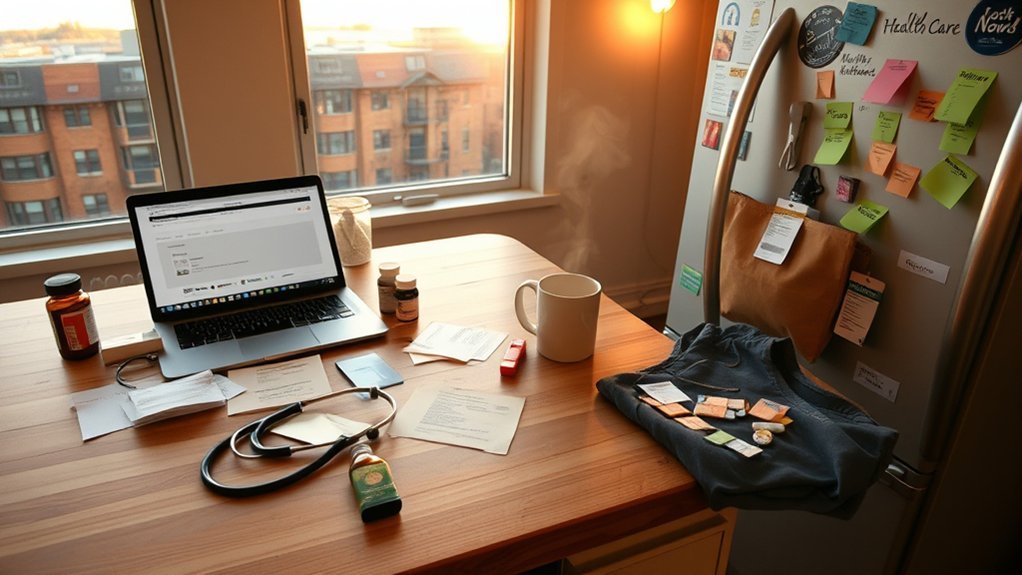Let’s say Cleveland is pleasantly affordable — and then look at what that actually means for your wallet. You’ll see concrete monthly figures for rent, utilities, groceries, transport and healthcare, plus typical one- and two‑bedroom costs and a salary target to live comfortably. Stick around to compare options and spot where you can realistically trim spending.
Cost of Living Overview for Cleveland, OH

Housing and everyday expenses in Cleveland generally cost less than in many U.S. cities: overall living costs run about 6–8% below the national average, with a representative household spending roughly $4,184 per month. You can use that gap to free up cash or redirect income toward goals.
Cost of living Cleveland data show average monthly rent about $1,285 across sources, with one‑bedrooms nearer $870–$1,066 and two‑bedrooms $1,084–$1,300+. Median home value ranges widely — roughly $87,400 in some measures to listing averages near $390–400K — and owning typically yields monthly mortgage costs around $1,122 at current rates.
Expect monthly utilities roughly $200–$276 for a ~900 sq ft unit, plus $60–$70 for internet and around $189 for phone. Groceries per month average about $350 per person. Additionally, building a house in Cleveland may provide an opportunity for customization that could impact overall costs.
These figures let you plan a realistic budget that prioritizes mobility, debt reduction, and building financial independence.
How Much Is Rent and Housing in Cleveland?

If you’re comparing costs citywide, rent and home prices are a big part of why Cleveland runs about 6–8% below the national average.
You’ll find rent in Cleveland is affordable: median rent sits near $1,066, with a 1‑bed at about $870 and a 2‑bed roughly $1,084.
Average reported monthly rents trend higher (~$1,285) depending on neighborhood and unit quality.
- Rentals: typical 2‑bed ranges $1,300–$1,800; 3‑beds $1,500–$3,000—choose location to control costs.
- Buying: median house value is ~$87,400; typical listings sit in the low‑to‑mid‑$100Ks; new construction often hits mid‑$500Ks.
- Costs & taxes: median monthly housing costs (incl. mortgage) ≈ $1,122; property taxes avg just under 1.9% (~$1,875 per $100K).
Use the 30% rule: expect to earn about $34,800 for a 1‑bed or $43,300 for a 2‑bed to afford rent comfortably. Additionally, understanding startup costs for group homes can provide insights into the housing market demand in the area.
Utilities and Internet Expenses

When you add up basic utilities for an average ~915 sq ft Cleveland apartment, expect roughly $276–$277 per month for electricity, heating, cooling, water and garbage, with electricity typically the largest line item (around $197), gas about $50 and water near $29.
Basic utilities for a ~915 sq ft Cleveland apartment average about $276–$277/month, with electricity around $197.
You’ll see energy costs slightly below national averages — roughly 5–14% lower depending on the dataset — but plan for winter spikes from heating.
Add an internet plan (60 Mbps+, unlimited) at about $69.44/month and your combined utilities + internet lands in the roughly $261–$346/month range noted by different sources and unit sizes.
Track electricity use closely; it’s the biggest driver of monthly cost and the easiest to cut with behavior changes and efficient appliances. To further reduce expenses, consider implementing regular maintenance on your appliances to prevent leaks and prolong their lifespan.
If you want liberation from surprise bills, set up autopay, compare ISPs, bundle cautiously, and consider smart thermostats or energy audits to lower both utility and internet overhead while keeping reliable service.
Monthly Grocery and Food Costs

You’ll typically spend about $285–$350 per month per person on groceries in Cleveland, with common items like a gallon of milk around $4.58, a loaf of bread about $3.95, and ground beef roughly $6.95/lb.
Eating out is noticeably pricier — expect about $13 for a cheap meal and roughly $75 for a mid‑range dinner for two — so occasional restaurants quickly push your monthly food bill above cooking at home.
Plan weekly meals at about $70–$90 per person to match the $285–$350 monthly range and reduce costs by favoring home‑cooked options. Implementing a repair budget can also help manage unexpected expenses, similar to how food costs can fluctuate.
Typical Grocery Prices
Expect to spend about $285 a month on groceries if you’re a single adult cooking at home in Cleveland (roughly $3,423/year), while a family of four typically pays near $839 monthly (about $10,068/year) or around $250 per week.
You’ll find grocery prices in Cleveland hover about 0.2% above the national average, so plan using practical figures rather than surprises.
Basic item costs: bread $3.91–$4.01, milk $4.58/gallon, eggs ~$3.24, ground beef ~$6.93–$7.01/lb, steak ~$15.51/lb.
Stocking staples (coffee, sugar, oil, OJ) adds predictable overhead.
- Single adult monthly groceries: $285 — economical, cook-at-home focused.
- Family of four: $839/month — bulk and variety.
- Weekly planning: ~$250 supports healthy, freeing choices.
Eating Out Costs
Dining out adds a predictable layer to your monthly food bill: plan on about $200–$400 extra if you eat out regularly, with cheap meals averaging $13 and mid-range dinners for two around $75 (before tip).
You’ll want to factor eating out Cleveland into your monthly food budget alongside $285 typical grocery spend for a solo cook or $839 for a family of four.
Restaurant prices skew modestly: cheap eats keep costs down, while mid-range dinner choices can push you toward the high end of that $200–$400 range.
Use discount grocers like Aldi to lower grocery baseline so you can dine out more without breaking free from your financial goals. Track habits, set a clear per-week dining cap, and adjust.
Weekly Meal Budget
Break down your monthly food plan into groceries and dining-out so you can track costs precisely: plan roughly $285 per month if you cook most meals (about $3,423 annually), though many budgets use $350 monthly per person, and a family of four averages about $839 per month in groceries (≈ $10,068 per year).
You’ll build a weekly meal budget from itemized prices — bread $3.91–$4.01, milk $4.58/gal, eggs $3.24–$3.62/dozen, coffee ~$5.30 — and factor eating out (inexpensive meal ~$13, mid-range dinner for two ~$75). Aim to keep monthly grocery cost near 10–15% of take‑home pay to stay flexible and free.
- Shop staples weekly, rotate meals.
- Batch-cook to cut per-meal cost.
- Limit dining out to planned occasions.
Healthcare and Insurance Estimates

While healthcare costs in Cleveland run a bit below national averages, you should budget for both premiums and out‑of‑pocket care: a typical doctor visit costs about $117, dentist and optometrist appointments about $111 and $110, and MIT/BLS/AHRQ benchmarks put annual spending at roughly $3,107 for a single full‑time adult (about $259/month) and $8,555 for a family of four. You’ll plan a monthly healthcare budget that covers health insurance premiums, copays, prescriptions and occasional OTC needs (ibuprofen ≈ $11.19). Cleveland healthcare spending tends to be ~3.9% under national averages, with provider visit prices roughly 17% lower. Use the table to visualize routine line items and keep control.
| Item | Typical Cost | Notes |
|---|---|---|
| Doctor visit cost | $117 | Primary care avg |
| Dentist | $111 | Routine exam |
| Optometrist | $110 | Vision check |
Aim for $259/month per adult baseline, adjust upward for prescriptions or family coverage; prioritize clear coverage and freedom from surprise bills.
Transportation: Driving, Transit, and Fuel

Typically, you’ll rely on a car in Cleveland, so plan for about $9,274 per year ($773/month) for a single adult to cover ownership, maintenance, insurance and fuel. You live in a driving-focused city, so that number reflects realistic expenses: insurance, routine upkeep, and fuel cost with gasoline around $3.19–$3.21/gallon. You can choose freedom or frugality — budget for tire balances (~$60) and other routine service alongside fuel and premiums.
- For solo commuters: $773/month covers car payments, insurance, maintenance, and fuel; expect variation by vehicle and mileage.
- If you use RTA public transit: single rides start at $2.50; a $95 monthly pass can replace driving days and cut monthly transportation costs.
- For families (2 adults + child): plan about $1,296/month ($15,556/year) due to extra vehicle and travel needs. Additionally, consider that air conditioning blowing hose replacement can be a significant expense if your vehicle requires maintenance.
Use these figures to decide when to drive, ride RTA public transit, or downsize to gain mobility and financial freedom.
Entertainment, Fitness, and Services

You can keep entertainment and fitness costs modest in Cleveland: movie tickets run about $11.70–$12, gym memberships average $34–$35/month, and inexpensive meals cost roughly $13 while a mid‑range dinner for two is about $75 (excluding tip).
Keep entertainment and fitness affordable in Cleveland: cheap movies, $34–$35 gyms, $13 quick meals, $75 mid‑range dinners.
You can plan cinema nights without breaking budget—movie ticket prices are lower than many big cities—so a monthly entertainment line can stay lean. Choose a basic gym membership or use Cleveland Metroparks trails for free fitness options that keep your routine sustainable.
Budget weekly for one inexpensive meal out and occasional mid‑range dinners; that balances social life with savings. Factor in routine services: men’s haircuts ~$23, salon services ~$40, dry cleaning ~$16.75 per item, yoga classes $18–$20, and minor auto work like tire balancing near $60. Additionally, consider the potential for revenue generation from local businesses that could enhance your entertainment options.
Track these small expenses in a monthly spreadsheet or app so services and fitness don’t creep up on you, letting you redirect funds toward experiences that free you.
Taxes, Property Tax, and Local Fees

Because local levies and municipal rules differ across Greater Cleveland, your tax burden can change noticeably from one neighborhood to the next. You’ll face a combined sales tax rate around 7–8% (state 5.75% plus local levies). Expect a municipal income tax on top of Ohio’s state income tax (brackets topping near 3.75%); rates and collection (often via RITA) depend on your jurisdiction. Property tax rate averages across counties run about 1.3–1.9% of assessed value (median roughly $1,875 per $100,000). Budget for annual property taxes plus utility and service charges and possible special assessments for schools or infrastructure. It’s essential to consider probate lawyer costs when planning your financial obligations, as legal fees can significantly impact your overall budget.
- Compare municipal income tax rates before choosing a town — small percentage differences compound annually.
- Map property tax rate and school-district levies; two similar homes can yield very different bills.
- Reserve a contingency for local levies and special assessments to protect your cash flow and freedom.
What Salary Do You Need to Live Comfortably in Cleveland?

To live comfortably in Cleveland as a single adult, you should target about $54,456/year pre-tax (roughly $4,538/month in basic expenses for a renter).
Use the 30% rent rule to gauge housing: a one‑bed at $870–$1,066 implies about $34,800–$42,640/year, while a two‑bed at $1,084–$1,300 points to $43,300–$52,000/year.
For homeowners or families plan higher—monthly budgets near $7,655 imply household incomes often $60k+ to avoid tight budgeting. Additionally, it’s important to consider your long-term financial implications to ensure a sustainable living situation.
Suggested Comfortable Salary
While Cleveland’s overall cost of living sits about 7–8% below the U.S. average, a comfortable single-adult salary is estimated at roughly $54,456 before taxes based on local prices for housing, transportation and healthcare.
You’ll see that this comfortable salary sits well above the median household income (around $33,678–$39,187), which means you’ll have more freedom to save, invest, or choose neighborhood amenities.
Housing drives much of the gap: one-bedroom rent medians (~$870–$1,066) and two-bedroom rent (~$1,084–$1,300) shape practical budgets.
Use the figures below to orient choices and preserve autonomy without overcommitting.
- One-bedroom rent: implies ~$34,800–$42,600 annual income.
- Two-bedroom rent: implies ~$43,300–$52,000 annual income.
- Family baseline: plan $60,000–$75,000+ for stability.
Rent-To-Income Guideline
If you want to keep housing costs at a sensible level, use the 30% rent‑to‑income rule: paying median one‑bedroom rent in Cleveland (~$870–$1,066/month) means you’ll need about $34,800–$42,640/year pre‑tax, while a median two‑bedroom (~$1,084–$1,300/month) pushes that requirement to roughly $43,300–$52,000/year—numbers to compare against the city’s suggested “comfortable” single‑adult salary of ~$54,456 and the local median household income (~$33,678–$39,187).
Use these figures to set realistic targets: median rent dictates your minimum annual income needed.
If you want freedom, aim for that comfortable salary or higher so rent won’t eat essential spending.
Buying raises costs further—expect a larger income gap if you pursue homeownership.
Family Budget Estimates
Because family costs in Cleveland hinge mostly on housing, childcare and groceries, plan your target salary around those big line items rather than averages alone. You’ll treat cost of living as a set of targets: housing costs $1,826–$1,992, utilities $688–$750, groceries $1,348–$1,574, and transportation about $766, producing monthly expenses of $7,079–$8,155 for typical families. Compare that to median household income ($33,678–$39,187) and average salaries (~$57,000) to see the gap.
- Aim for combined pre‑tax income of $75,000–$100,000+ to follow the 30% housing rule and save.
- If you rent a 2‑bedroom, target ~$43,300 salary for housing affordability.
- For freedom to build wealth, prioritize savings within your family budget.
Frequently Asked Questions
What Is the Cost of Living in Cleveland, Ohio per Month?
You’ll spend about $3,800–$4,400 monthly in Cleveland, covering rent, utility costs, food prices, healthcare access, public transportation and entertainment options; that lets you budget practically and pursue more financial freedom and mobility.
How Much Money Do You Need to Live Comfortably in Cleveland?
About $4,538/month. Picture a ship plotting freedom: you’ll weigh neighborhood safety, commute times, local taxes, healthcare access and groceries cost, then budget rent, utilities, transport and savings to live comfortably and independently.
Is Rent Expensive in Cleveland?
Not really — rent’s generally lower than national averages, but neighborhood comparisons matter; you can use rent negotiation, short term rentals, student housing, and avoid hefty pet fees to keep costs liberatingly affordable.
What Is the Average Cost of Living in Ohio per Month?
About $3,800–4,200 monthly; you’ll note utilities averages around $200–300. You’ll weigh transportation options, grocery trends, healthcare costs, and childcare expenses to budget practically and reclaim financial freedom.
Conclusion
Think of Cleveland’s cost of living as a balanced ledger: rents typically sit between $870–$1,300, utilities plus internet around $260–$346, groceries $285–$350, transport about $773, and healthcare near $259. With monthly household spending near $4,184, you’ll want roughly $54,000–$55,000 annually to live comfortably. Use these figures as a practical map to budget, prioritize housing and transport, and adjust lifestyle choices to keep your finances steady.


